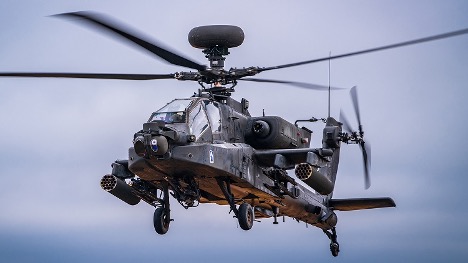ADF to Add Apaches as Tiger Replacement Attack Helicopters
The Commonwealth has announced it has selected the Boeing AH-64E Apache Guardian attack helicopter to replace the Australian Army’s fleet of 22 Airbus Tiger armed reconnaissance helicopters under Project LAND 4503.
The AH-64E is widely regarded as the most capable attack helicopter on the market today. Its latest iteration allows it to be networked with future land and wider ADF command and control systems, including the ability to conduct manned-unmanned teaming (MUM-T) operations, a key requirement of the Australian Army going forward.
The widely-expected announcement by Defence Minister Senator Linda Reynolds confirms that Airbus’ late-2020 11thhour pitch to upgrade the Tigers and supplement them with additional airframes from European stocks for about one-third the cost of the new Apaches had failed.
Also under consideration for LAND 4503 and recently touted in some circles as a potential come-from-behind contender was the Bell AH-1Z Cobra ‘Viper’.
The Viper was seen by some as being a logical contender due to it being fully-marinised, and because of its commonality with US Marine Corp AH-1Zs that regularly deploy to our region and with which Australian forces are most likely to undertake combat operations. But the airframe upon which the Viper is based is older than the Apache, and was seen as being closer to the end of its growth potential.
While not yet formally approved by the US State Department through a public announcement on the on US Defence Security Cooperation Administration (DSCA) notifications page, it is expected the 29 Apaches, sensors, communications, training, initial spares and support, facilities, and other equipment will cost in the region of A$4 billion, with the first aircraft expected to be delivered from 2025.
“This new ARH capability will strengthen Australia’s armed reconnaissance force to better shape our strategic environment and deter actions against our national interest,” Minister Reynolds said in a statement on January 15. “Defence considered a number of helicopters against key criteria of proven ability, maturity and an off-the-shelf operating system.
“The Apache Guardian is the most lethal, most survivable and lowest risk option, meeting all of Defence’s capability, through-life support, security, and certification requirements,” she added. “By pursuing a proven and low-risk system offered by the Apache, Defence will avoid the ongoing cost and schedule risk typically associated with developmental platforms.”
The above statement is an interesting one, especially considering no developmental platforms were considered for LAND 4503. While the AH-64E and AH-1Z were officially shortlisted last year, Airbus’ proposal to upgrade the Tiger was an unsolicited one, and was formally rejected by Minister Reynolds in September 2020.
While an upgraded Tiger may have been considered developmental on top of a base system that had already experienced numerous development issues, the upgrade work would have been performed in Australia which would clearly align with the Commonwealth’s stated Australian Industry Capability (AIC) push – especially as it seeks to rebuild the post-COVID economy. Additionally, the base Tiger is now well-understood by the ADF, and all of the required training, sustainment, and basing systems and infrastructure for that aircraft are already in place.
Further, from a timing point of view a Tiger upgrade would have better positioned Australia to participate in the US Army’s Future Vertical Lift (FVL) program, and specifically the Future Armed Reconnaissance Aircraft (FARA)element of FVL from the early 2030s.
ADBR understands the Apache has long been the favoured solution for LAND 4503, and that Australian Army personnel had already been dispatched to the US Army’s Fort Rucker training base in southern Alabama to fly and undertake initial maintenance training on the aircraft.
This article was written by Andrew McLaughlin and published by ADBR on January 15, 2021.

